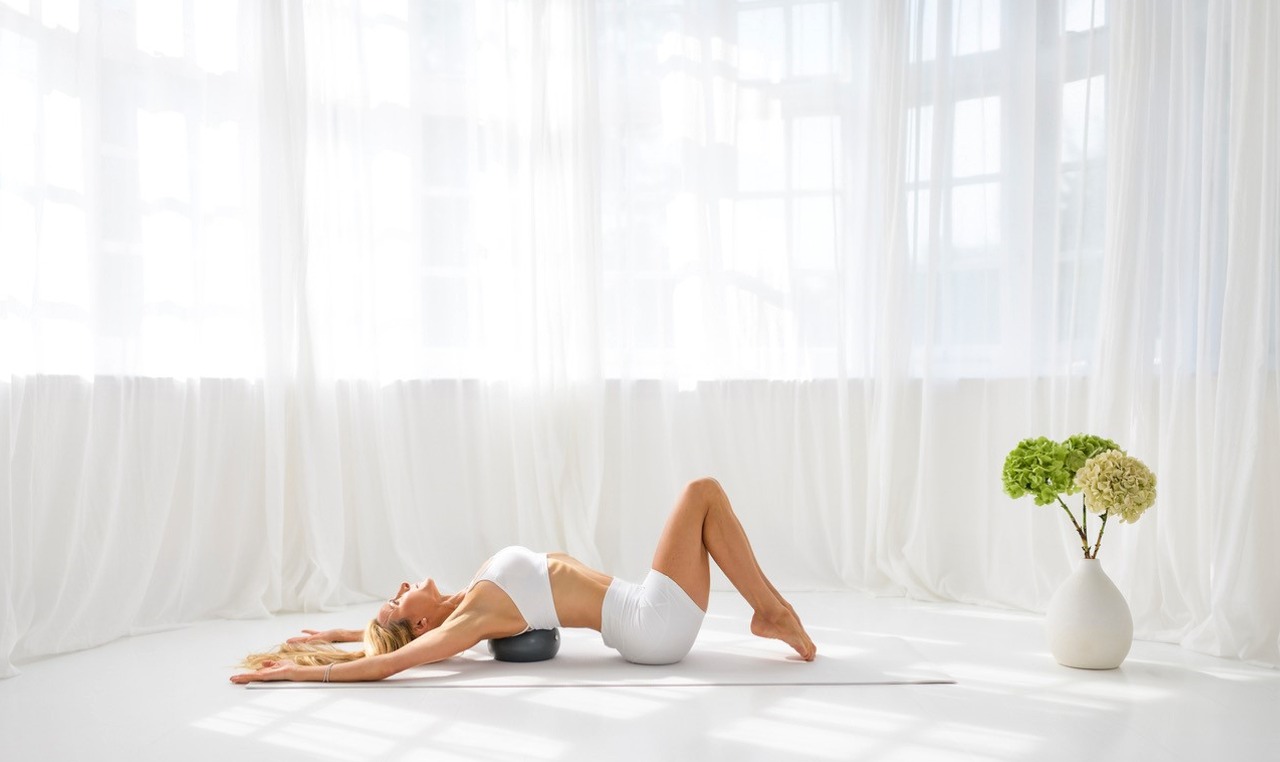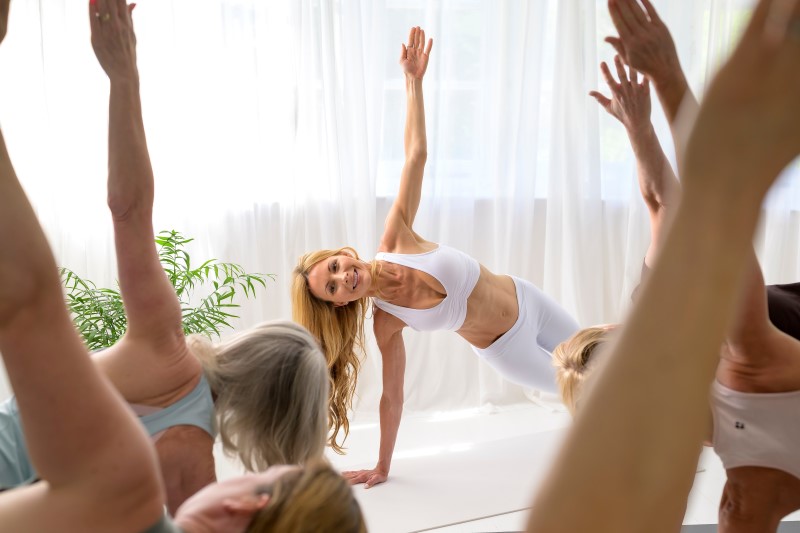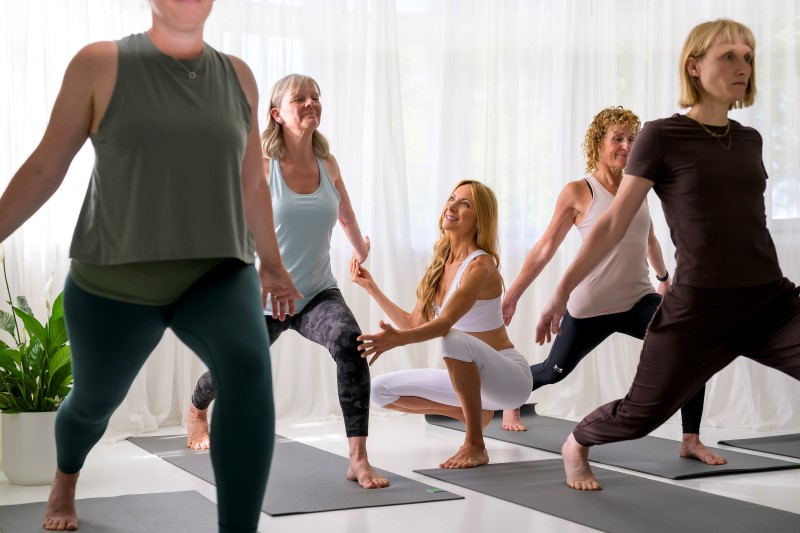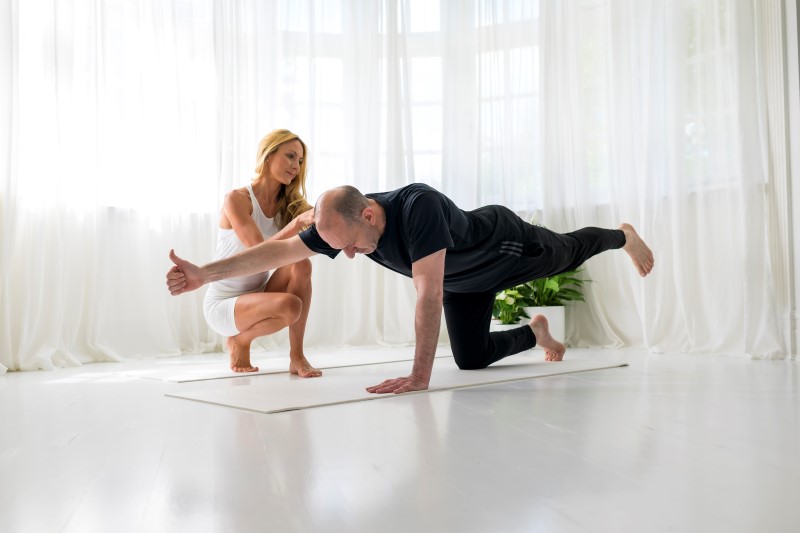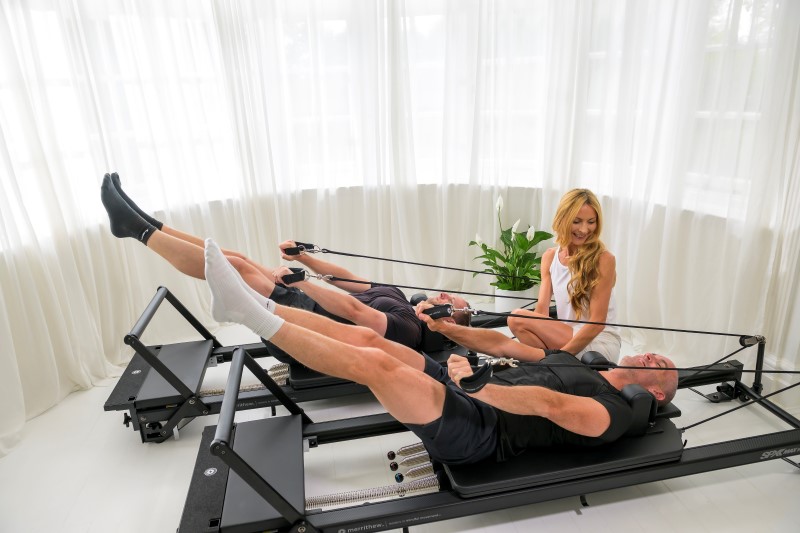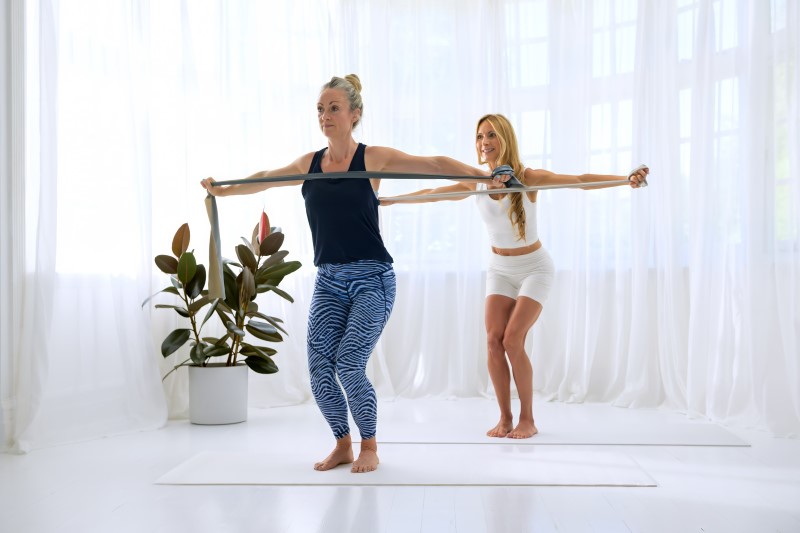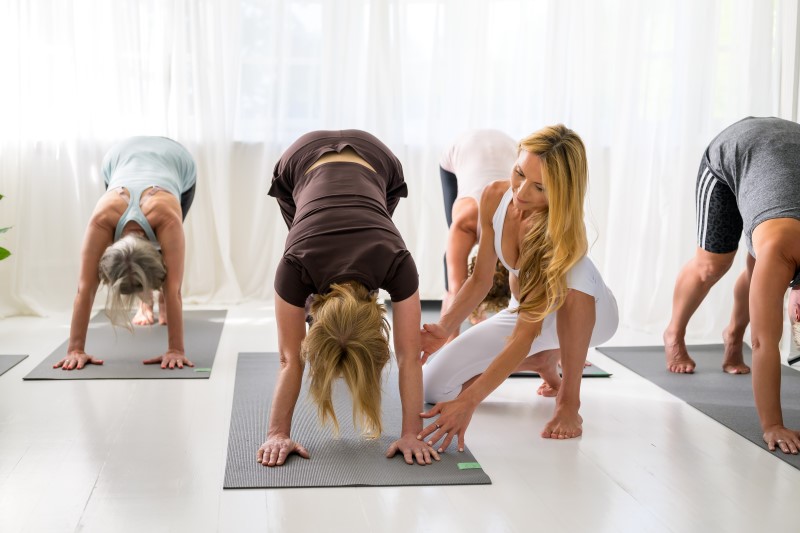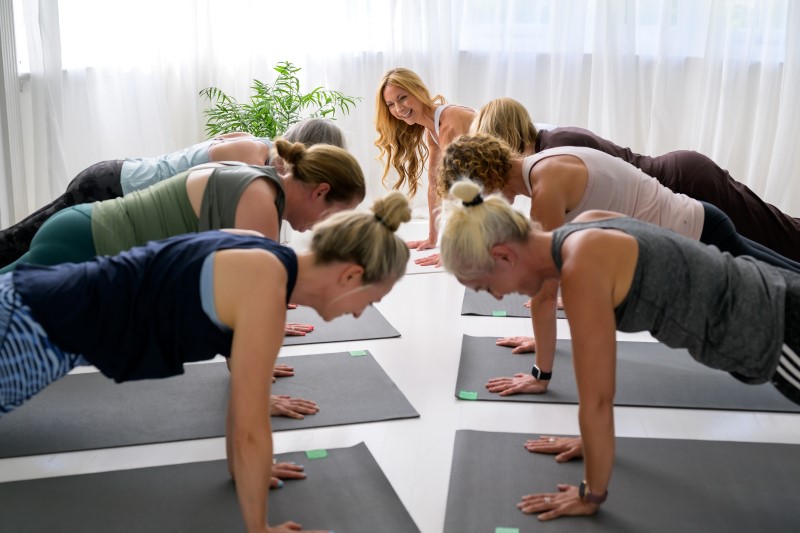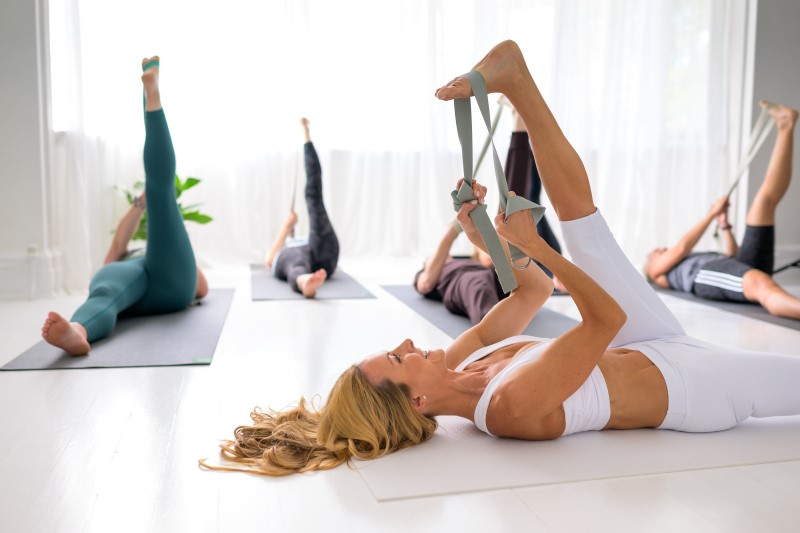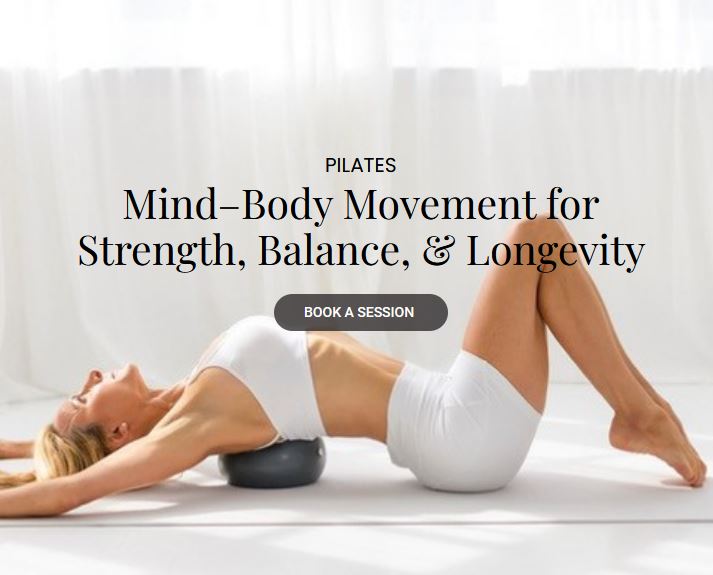
“You will feel better in ten sessions, look better in twenty sessions, and have a completely new body in thirty sessions.”
– Joseph Pilates
Still exploring the right teacher or method for you?
You’re invited to join a complimentary class — in person or online — and experience what it means to move with purpose and precision.
Because it’s not about doing more — it’s about doing it right.
And if it doesn’t challenge you, it won’t change you.
When you feel it, you know it’s working.
Sign up below to book your free class and discover the power of intelligent movement.

Pilates That Works
Pilates is so much more than stretching and doing exercises on the floor. It’s a full-body conditioning method that builds deep core strength, improves posture, flexibility, whole-body strength and balance, and supports long-term joint health and injury prevention.
My classes focus on:

Strong, functional
core strength

Long, lean,
flexible muscles
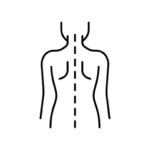
Better posture
and alignment
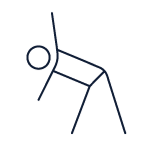
Injury prevention and
sustainable results

Maximum efficiency
and effectiveness

Community
When your core is strong, your entire body becomes more stable, efficient, and resilient. I will help you master the correct technique to get the most from every exercise, whilst tailoring the exercises to your needs. My aim is to help you feel good whilst you move, learn to move well to keep your body strong, fit, healthy and supple for life and longevity.
This is intelligent movement with lifelong benefits.
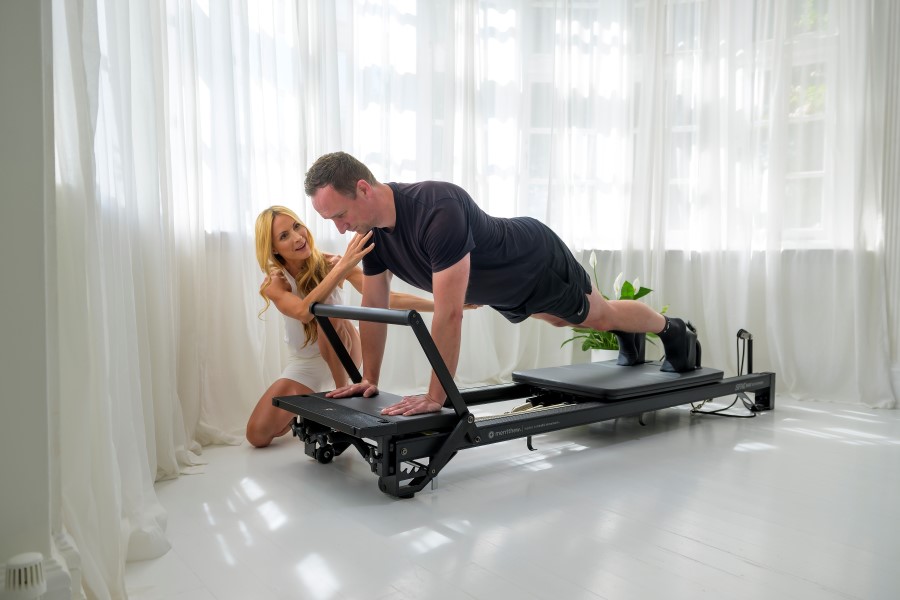
Pilates for Sports Performance
To perform well and avoid injury, athletes need more than just brute strength — they need muscle balance, core stability, and flexibility. That’s where Pilates (and yoga) comes in.
Over the years, I’ve helped footballers, runners, cyclists, golfers, triathletes, and boxers, move better, play harder, and recover faster — and I’ve seen the transformation both in my clients and in my own training.
Benefits include:
- Reduced injury risk
- Improved muscular balance
- Better mobility and control
- Enhanced performance
- Increased core strength and stability
- Better recovery
Whether you’re elite or amateur, Pilates can support your training and keep you doing what you love — for longer.
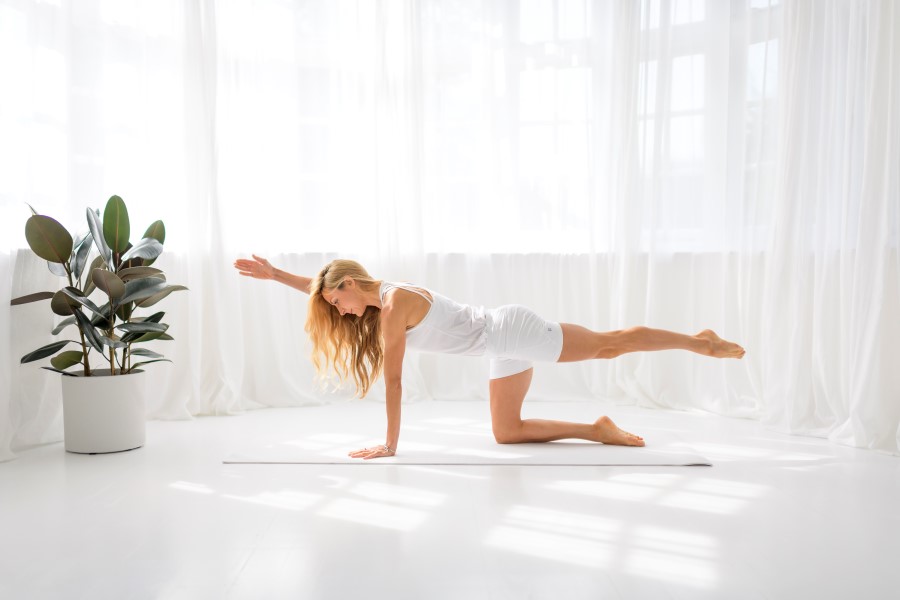
Prenatal & Postnatal Pilates
Supporting women through pregnancy and beyond is a passion of mine. I have a specialist qualification in teaching prenatal and postnatal Pilates and yoga and have over 15 years’ experience teaching and helping women exercise safely and effectively during this very special time.
During & after pregnancy, Pilates can help you:
- Exercise safely and release feel-good hormones
- Strengthen your core and pelvic floor
- Relieve back pain and improve posture
- Maintain strength and mobility
- Help your body prepare for labour and motherhood
- Support a quicker postnatal recovery
I’ll guide you through safe, effective movement that adapts to your body at every stage. It’s not about “bouncing back” — it’s about healing, re-strengthening, and feeling your best in a body that’s done something incredible.

Pilates for Rehabilitation
Pilates is widely recommended by physiotherapists for recovery — and for good reason. Many injuries are caused by poor movement patterns and muscular imbalances that can be corrected with proper technique and focused strengthening.
My training has been physiotherapy-led, and I continually update my knowledge through workshops and collaborations with professionals. I’ve helped clients rehabilitate everything from back and hip pain to shoulder issues and chronic conditions like arthritis.
If you’re recovering from injury or want to move smarter to prevent one, I can help.
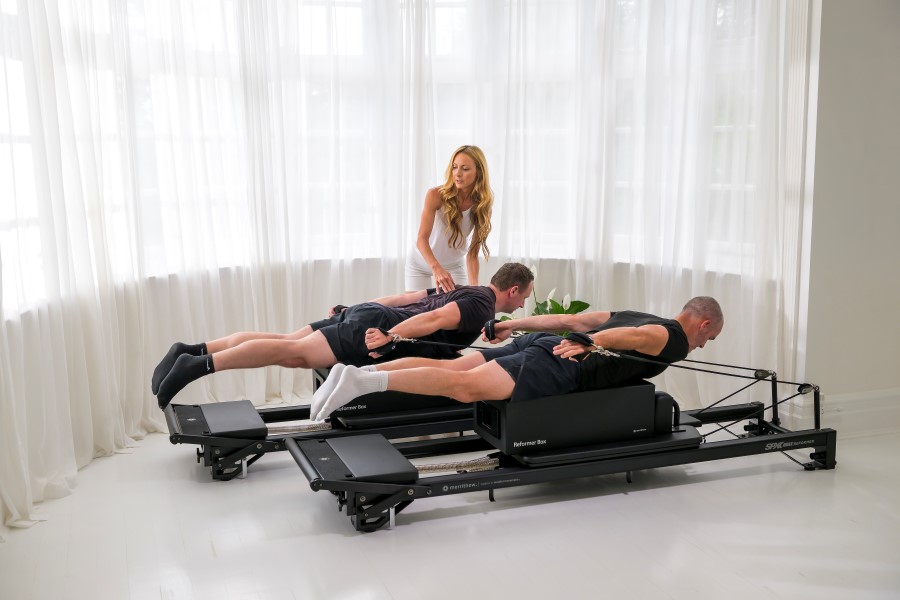
Men’s Pilates
Pilates isn’t just for women — it’s essential for men too. In fact, it’s one of the most effective ways for men to improve whole-body functional strength, flexibility, performance, and reduce injuries and aches and pains.
Many men experience tightness in the hips, lower back, and shoulders, and often train for strength without addressing mobility, posture, or deep core stability. Pilates helps fill those gaps.
This intelligent, low-impact method builds real strength from the inside out — improving flexibility, balance, body awareness, and control.
Whether you’re an athlete, a gym-goer, or someone who sits at a desk all day, Pilates will help you move better, feel stronger, and prevent injury.
My Men’s Pilates sessions target:
- Core strength and stability (without straining or “pushing out” the abs)
- Common areas of tightness (hips, hamstrings, lower back, shoulders)
- Strength in underused or weak muscle groups
- Injury prevention and posture correction
Whether you’re an athlete or just want to move better, Pilates will challenge you in all the right ways — and you’ll feel the difference fast.
Ready to move better and feel stronger?
Join me for Pilates classes in Chislehurst, Bromley, or online — tailored to your body and your goals.
TESTIMONIALS
Client success stories
![]()
“My life is a busy one running my own business and a family. The highlight of my week is my Pilates sessions with Liz. She helps me combat the stress of life and desk work. She is always positive and gives such a warm welcome. Liz tailors classes brilliantly to individual’s needs – focusing on strengthening and stretching the bits we need and forget about ! She cleverly / subtly challenges “you” to improve on your Pilates’s strength. I would highly recommend Liz. She’s a superb and natural teacher.”
Morag Horner
![]()
“Elizabeth’s personalised approach helped me rebuild my core strength post-pregnancy. I couldn’t recommend her enough!”
Carly
![]()
“Elizabeth genuinely cares and helped support me on my journey, I am so pleased I found her as I’ve been pain-free and finally feel more confident and healthy.”
Lisa
Frequently Asked Questions
Do I need to be flexible, fit or strong to start Pilates?
Not at all. Pilates meets you where you are. My method is designed for real bodies and real lives—whether you’re a complete beginner or have experience, I’ll guide you through safe, progressive movements tailored to your level.
What kind of results can I expect from regular Pilates practice?
You can expect improved core strength, posture, flexibility, muscle tone, whole-body strength, better body awareness, and a reduction in aches and tension. Many of my clients also comment that they feel an enhanced sense of wellbeing, improved confidence and mental clarity.
How is your style of teaching Pilates different?
With over 16 years’ experience, I have learnt that the most effective Pilates is one that is tailored to the client’s needs and performed with correct technique. Not all Pilates moves are suitable or even beneficial to everybody. Bodies come with history, injuries, stress, and stories and thus a “one size fits all approach” does not work. I carefully plan and tailor every class to needs and requirements of my clients.
A lot of my clients are time poor, need effective and efficient tailored movement, work at desks, and have sedentary lives. They often start Pilates with either muscle imbalances (such as tight hamstrings, tight chest muscles, weak back muscles, lack of core strength), poor spinal alignment/posture (such as a forward head position or rounded shoulders); so I will choose the best Pilates exercises to achieve a more balanced healthy body for life.
My classes are hot on technique because it ensures safety and effectiveness of the exercises. Doing an exercise with poor technique can end up doing more harm than good- it’s practising the correct technique consistentlythat guarantees youfantastic results.
It’s not just what you do, but how you do it. I will help you progress mindfully and effectively —whether your goal is improved core strength and abdominals, or all over body-greater strength, better posture, improved mobility and flexibility, or just greater all-round fitness.
What should I wear or bring to a Pilates session?
Bring a bottle of water and wear comfortable, ideally fitted clothing so I can see your alignment and technique. In most Pilates classes you will need a mat, a resistance band, two tall blocks and a Pilates small ball (please get in touch if you need to borrow any equipment for a class; you don’t need to buy everything to start).
Some classes use other small props such as hand weights or a Pilates ring but these will be specifically stated under the class description.
Is Pilates suitable if I have an injury or health condition?
In most cases, yes. However, if you have a specific condition or injury, I recommend an initial 1:1 first before joining a group class so that I can support you safely in a group class and tailor the class to suit your needs.
How often should I do Pilates to see results?
Even one session a week can make a difference, but two to three sessions a week typically bring quicker results. Consistency is key—think of it as investing in your body’s long-term wellbeing – like investing into your health pension.
I created the Membership for clients that could not logistically get to any more classes a week but wanted to do some extra workouts and exercises at home to improve quicker – the Membership is perfect for that.
What's the difference between mat Pilates and reformer Pilates?
Mat Pilates uses your bodyweight and small props, while reformer Pilates involves a machine with springs for resistance. I teach both mat and reformer Pilates, but I specialise in mat-based Pilates that you can do anywhere—with a method that gets results. I personally love both, but mat is more functional and accessible.
I'm already quite active—will Pilates still challenge me?
Absolutely. I am renowned for delivering challenging dynamic classes that challenge your body and create change. My method is designed to challenge you at any level. Many clients who run, lift weights, or do yoga find Pilates gives them the edge in control, precision, and injury prevention. It complements other forms of fitness and often creates a better-balanced body, which can be lacking in other forms of fitness.
Can I do Pilates alongside yoga or other workouts?
Yes! In fact, Pilates complements other forms of movement beautifully. It builds deep strength, stability, and mobility—all of which enhance performance in other activities.

